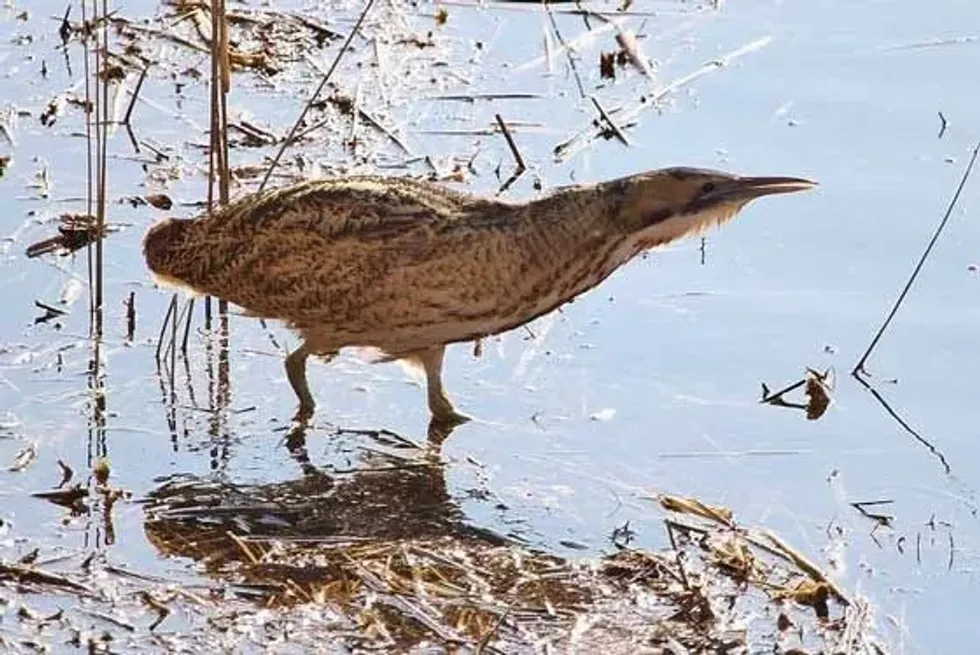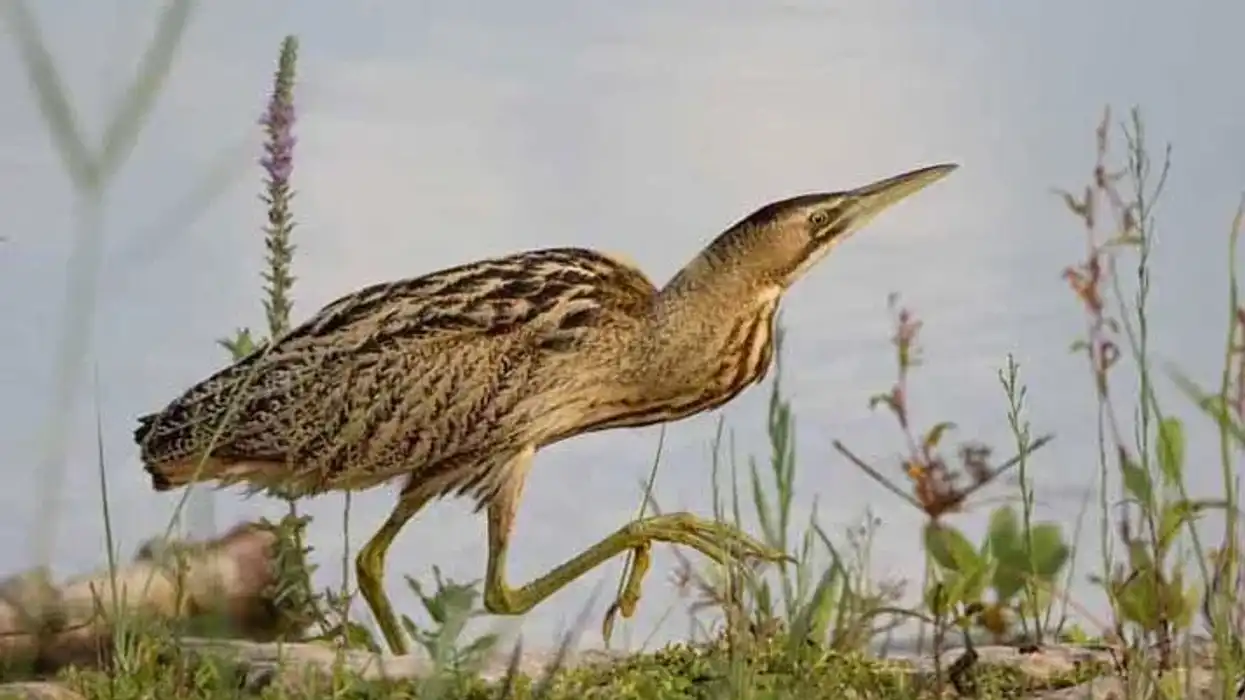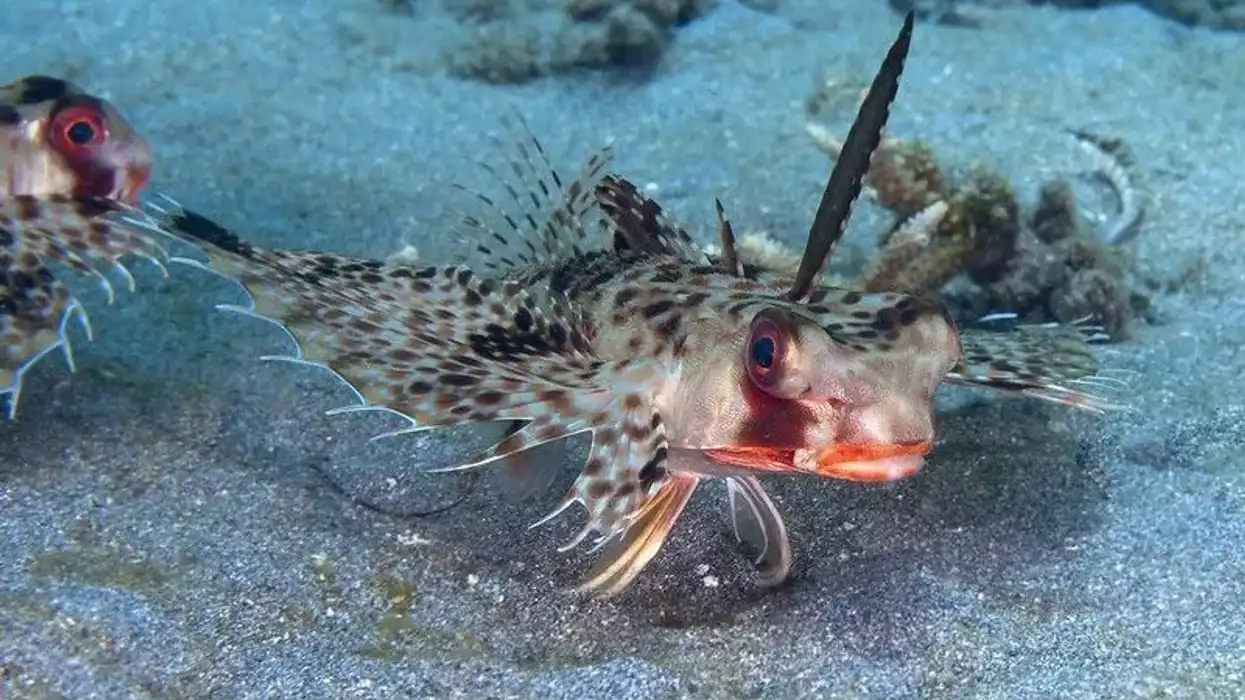Fun Eurasian Bittern Facts For Kids
Content
- What type of animal is a Eurasian bittern?
- What class of animal does a Eurasian bittern belong to?
- How many Eurasian bitterns are there in the world?
- Where does a Eurasian bittern live?
- What is a Eurasian bittern's habitat?
- Who do Eurasian bitterns live with?
- How long does a Eurasian bittern live?
- How do they reproduce?
- What is their conservation status?
- What do Eurasian bitterns look like?
- How cute are they?
- How do they communicate?
- How big is a Eurasian bittern?
- How fast can a Eurasian bittern fly?
- How much does a Eurasian bittern weigh?
- What are the male and female names of the species?
- What would you call a baby Eurasian bittern?
- What do they eat?
- Are they dangerous?
- Would they make a good pet?
- Did you know...
- The Eurasian bittern's call
- Different types of bittern
Bitterns belong to the heron family. The Eurasian bittern Botaurus stellaris are medium-sized herons mostly inhabiting the wetland areas of Asia, Europe, and Africa.
Also known as great bittern Botaurus stellaris, the wading bird has excellent adaptation to reed-beds. The Eurasian bittern is among the largest of the four bigger Botaurus bitterns. Some other bitterns are the American bittern (Botaurus lentiginosus), the Pinnated bittern or the South American bittern (Botaurus pinnatus), the Australasian bittern (Botaurus poiciloptilus).
Birds of this species have a thick, compact body, thick neck, and short legs that thrive in wetland areas where there’s tall grass and an abundance of food. Typical of the heron family, the great bittern Botaurus stellaris also has a long, pointed bill like a dagger.
These migratory birds have ochre-brown or golden brown plumage, with dark streaks or black markings and asymmetrical dark vertical stripes on the plumage. Its coloration allows the great bittern to camouflage in the reed-beds just like its cousin, the American bittern.
The American bittern and the Eurasian bittern Botaurus stellaris are almost similar in looks. The only difference is the American bittern are slightly smaller, have lighter dark streaks and speckled plumage rather than the striped.
You may also check out the fact files on the greater bird of paradise and uguisu from Kidadl.
Eurasian Bittern Interesting Facts
What type of animal is a Eurasian bittern?
Eurasian bitterns are wading birds. The word "bittern" refers to small or medium-sized birds of the heron family, although smaller than herons.
What class of animal does a Eurasian bittern belong to?
Eurasian bittern is a species of bird belonging to class the aves. Like the Eurasian bittern, its cousins, the American bittern, the South-American bittern, least bittern, the black mangrove bittern, all belong to the family of herons.
There are fourteen subspecies of bitterns residing in the Americas, Europe, Asia, and Africa. They have similar characteristics, but some are large and some small.
How many Eurasian bitterns are there in the world?
It is difficult to determine the exact global population of the Eurasian bittern species. Some research indicates the population to be 110,000-340,000 birds.
Where does a Eurasian bittern live?
Bitterns live in vegetated wetlands and marshes. They prefer brackish waters, low-lying swamps, low acidity marshes where tall reeds grow.
What is a Eurasian bittern's habitat?
The Eurasian bittern, as well as the American bittern, and the South American bittern, have similar habitats. These wading birds live in densely vegetated swampy wetlands with extensive beds of reed and tall grass.
The marshes chosen by the Eurasian bitterns are usually shallow, low-lying, less acidic, with a scattered vegetative growth.
Usually, these birds prefer marshes with canes, sedges like Scirpus, perennial reeds like Phragmites, papyrus swamps, brackish wetlands in Europe and Asia. The extensive wet rice fields also serve as an important habitat for bitterns when it is not their breeding season.
When the birds are not nesting, their habitat choices are extensive, including open aquatic habitats like grassy meadows, sluggish rivers, fish ponds, watercress beds, fish farms, and sewage lagoons. The species is more visible during the winter months when it comes out of its tall grassy habitats to open or to run water areas to feed.
Due to the freezing weather, the north Eurasian bittern populations migrate during winter. Some populations stay close to the breeding grounds in areas where the water is not frozen.
These birds usually migrate at night, flying solo or in groups. When severe winter starts, the southward migration begins from September to December.
The range of this species covers parts of Europe, Africa, and Asia. The birds from Western Europe fly south through countries like France, Spain, Greece, and Italy crossing the Sahara.
At this time, these birds can be spotted in the oases of the African desert. This species of birds fly as far as Myanmar, China, the Indian subcontinent, Iran, Iraq, and Russia. The return flight begins from February to April.
The subspecies population of bitterns residing in African is mostly sedentary. They may move to South Africa during the breeding season.
Who do Eurasian bitterns live with?
Birds of the bittern species are usually solitary when it is not the breeding season. The Eurasian bitterns live alone in their territory. They walk stealthily in the mucky waters looking for food like fish and aquatic insects. Their brown plumage is a wonderful camouflage.
How long does a Eurasian bittern live?
Eurasian bitterns live for about nine years.
How do they reproduce?
With the changing season, Eurasian bitterns nest in different places. In Europe, the nesting starts from March to July, and in South Africa, the nesting time is from September to January. In the tropical regions, it is the rainy months.
During the breeding season, the birds stay confined to their reed swamp habitat among the dense vegetative growth. The floating nest is made by the female bird from reeds and plant materials. The floating nest is lined with finer materials and is well hidden among the tall grasses.
Adults perch close to the nest, keeping a close watch. Eurasian bitterns reach their sexual maturity at the age of one year.
The female birds lay four to six eggs in early March. The brown speckled eggs are greenish-brown. The bird may take two to three days to lay all its eggs but starts incubating as soon as the first egg is laid.
For 26 days, the female incubates the eggs, and when the chicks come out, they have light and fluffy reddish-brown downs. The fledglings remain in the nest and are fed by the mother bird. Males are polygamous and mate with multiple females in a single breeding season.
The young birds are ready to leave the nest after two or three weeks.
What is their conservation status?
Once found in abundance, the Eurasian bittern population has faced a loss of habitat and a drop in numbers in Europe. Although the conservation status of the species is of Least Concern, the populations in some countries like Spain have declined alarmingly.
The chief Eurasian bittern intimidation all through its range is habitat loss, draining of swamps and bogs, and other human activities. Despite these concerns, it is not a rare species.
Eurasian Bittern Fun Facts
What do Eurasian bitterns look like?
The Eurasian bittern is one of the largest bittern species with a stocky body, rounded head, and a thick neck. The birds are golden-brown with dark speckles on the upper side of the body and the wings. They have a dark crowned head and yellow or reddish-orange eyes.
These golden brown herons have a short tails with similar black streaks and speckles to its body. Some elongated feathers are visible on the bird’s rear neck and shoulders. These feathers may erect when the bird is angry or disturbed.
The under-parts of the body are pale yellow with vertical dark reddish-brown stripes. The throat is slightly darker than the body. The greenish legs are shorter compared to the body.
The head and the napes are black. These birds have a unique blackish mustache-like extension. It starts from the base of the bill and continues till the sides of the bird’s head. The yellowish-green bill is long and pointed to help the bird pick its prey.
Sexual dimorphism is negligible, and both sexes look similar. The young birds resemble adult bitterns but are paler in color.

How cute are they?
Bitterns are wild birds from the heron family and cannot be called cute or cuddly like cats and dogs.
How do they communicate?
Bitterns are loud birds. Male bitterns are well-known for their booming call. The well-known male Eurasian bittern call is usually a mating call used during the breeding season.
The booming call sounds like a ‘fog horn’ or a ‘bull’s voice’ fetching these birds several nicknames. The booming call can be heard quite well from two miles away during quiet nights. The scientific name of Eurasian great bittern Botaurus stellaris has significance as ‘Botaurus’ refers to a bull in Latin and ‘stellata’ due to the bird’s speckled plumage.
Eurasian bitterns react to threats with attacks. The nesting birds defend their territory, which covers a large part of particular reed-beds, against other males. Aggressive males have serious fights and deadly pecks with their pointed bills.
The typical fighting posture is a fluffed neck plumage and open wings. Besides ground attacks, they also have aerial fights. Males challenge by encircling each other and threatening with their sharp-edged bills.
When nesting birds are disturbed, they fluff their long neck feathers, spread their wings on the ground, raise the thick neck and head with their long bill pointed towards the sky.
In the cold weather, bitterns fluff their plumage and turn into a resting egg-shaped birds to keep their body warm.
The flight posture of the Eurasian bittern is slightly clumsily. The birds extend their neck and fly low over tall grass and reeds. The flight is mostly never too long. Short distances are covered in a single flight, stopping in-between for food and cover when traveling long distances while migration, the neck is retracted like their cousin heron species.
Apart from the booming call, bitterns have other calls like the flight call or the ‘Kau.’ A disturbance or a warning call is a ‘Kro’ or ‘Kra’ call with short ‘ko-ko-ko' sounds. The young birds make a crackling sound ‘rah-rah-rah.’
How big is a Eurasian bittern?
Compared to a Eurasian tree sparrow which is 4.7–5.5 in (12-14 cm), a Eurasian bittern is about seven times longer with an average length of 27.5–31.5 in (69.8-80 cm).
How fast can a Eurasian bittern fly?
The flying speed of the Eurasian bittern has not been recorded. However, these birds do not fly very fast and mostly cover short distances in every flight.
How much does a Eurasian bittern weigh?
The male birds weigh 2-4 lb (0.96-1.9 kg), and smaller females weigh 1.8–2.5 lb (0.86-1.15 kg).
What are the male and female names of the species?
Male and female Eurasian bitterns do not have any special names. They can be called cocks and hens like other birds.
What would you call a baby Eurasian bittern?
A baby bittern is called a nestling, chick, or fledgling.
What do they eat?
Eurasian bitterns are solitary feeders when not nesting or breeding and look for prey during the day as well as at night. The buff-brown birds prey on small insects, crustaceans, amphibians, small mammals, and fish. Some of the common prey include frogs, salamanders, crustaceans, water beetles, grasshoppers, eels, dragonflies.
The secretive bird remains camouflaged in its reed-bed habitat and hunts slowly, walking with great stealth. Its hunting posture is usually a crouched body with its bill pointed forward.
Eurasian bitterns walk quickly to cross open spaces where it is visible and may also swim across patches of open water. This species of bird intelligently stirs the water with their feet to make fish move. Once it locates its food, the bird acts with lightning speed.
Are they dangerous?
Eurasian bitterns are not dangerous. They are shy birds that like to hide in their swampy, wetland habitat.
Would they make a good pet?
Bitterns are wild bird species that cannot be kept as pets.
Did you know...
The great bittern has several local names due to its habitat, plumage, and the typical Eurasian bittern sound. Some of the colloquial names are barrel-maker, butter-bump, bog hen, fog-horn, big-bull that it gets for its booming call, habitat, and appearance.
The great bittern has different names in various languages. Some are Avetoro Común in Spanish, Butor étoilé in French, Rohrdommel in German, Boerdomp in Dutch, Rördrom in Swedish, Sankano-goi in Japanese.
The population of Eurasian bittern is declining. Habitat loss has pushed these bog-birds mostly into natural reserves. Although the population of this species is stable, their habitats need protection for their conservation.
The Eurasian bittern's call
The Eurasian bittern call is one of the loudest bird calls. The booming call is usually produced by the male in spring during the breeding season. The sound is made with a closed bill pointed downwards and with fluffed-up neck feathers.
Dawn and dusk are the most favorite time for the booming call, but you can even hear it at night or any time of the day. It sounds like a long call in intervals with sounds ‘up-up-up-rumb’.
The booming call is for securing territory during the breeding season and for attracting a female; the female replies with a “Wumph” call.
Different types of bittern
There are fourteen species of bitterns broadly divided into two genera. The Ixobrychus includes the smaller bitterns and the Botaurus the larger bitterns like the Eurasian bittern, American bittern, Australasian bittern, South American bittern, and the Botaurus hibbardi (fossil).
Smaller bitterns include species like the little bittern, cinnamon bittern, dwarf bittern, little bittern, black bittern, yellow bittern, least bittern.
The range of every species of bittern varies. But these birds, like their cousin herons, are found in all continents except Antarctica.
Here at Kidadl, we have carefully created lots of interesting family-friendly animal facts for everyone to discover! For more relatable content, check out these bullfinch facts and short-eared owl facts pages.
You can even occupy yourself at home by coloring in one of our free printable Eurasian bittern coloring pages.
We Want Your Photos!
More for You
See All
Bachelor of Science specializing in Computer Science

Christian MbaBachelor of Science specializing in Computer Science
Christian Mba is an experienced blogger and content writer with over a decade of experience. He holds a Bachelor of Science degree in Computer Science from Nigeria and has a keen interest in Python programming. Along with his writing and blogging expertise, he is also an SEO specialist with more than six years of experience. Chris, as he is commonly known, has a passion for music and enjoys playing the piano.
Disclaimer
1) Kidadl is independent and to make our service free to you the reader we are supported by advertising. We hope you love our recommendations for products and services! What we suggest is selected independently by the Kidadl team. If you purchase using the Buy Now button we may earn a small commission. This does not influence our choices. Prices are correct and items are available at the time the article was published but we cannot guarantee that on the time of reading. Please note that Kidadl is a participant in the Amazon Services LLC Associates Program, an affiliate advertising program designed to provide a means for sites to earn advertising fees by advertising and linking to Amazon. We also link to other websites, but are not responsible for their content.
2) At Kidadl, we strive to recommend the very best activities and events. We will always aim to give you accurate information at the date of publication - however, information does change, so it’s important you do your own research, double-check and make the decision that is right for your family. We recognise that not all activities and ideas are appropriate for all children and families or in all circumstances. Our recommended activities are based on age but these are a guide. We recommend that these ideas are used as inspiration, that ideas are undertaken with appropriate adult supervision, and that each adult uses their own discretion and knowledge of their children to consider the safety and suitability. Kidadl cannot accept liability for the execution of these ideas, and parental supervision is advised at all times, as safety is paramount. Anyone using the information provided by Kidadl does so at their own risk and we can not accept liability if things go wrong.
3) Because we are an educational resource, we have quotes and facts about a range of historical and modern figures. We do not endorse the actions of or rhetoric of all the people included in these collections, but we think they are important for growing minds to learn about under the guidance of parents or guardians.







